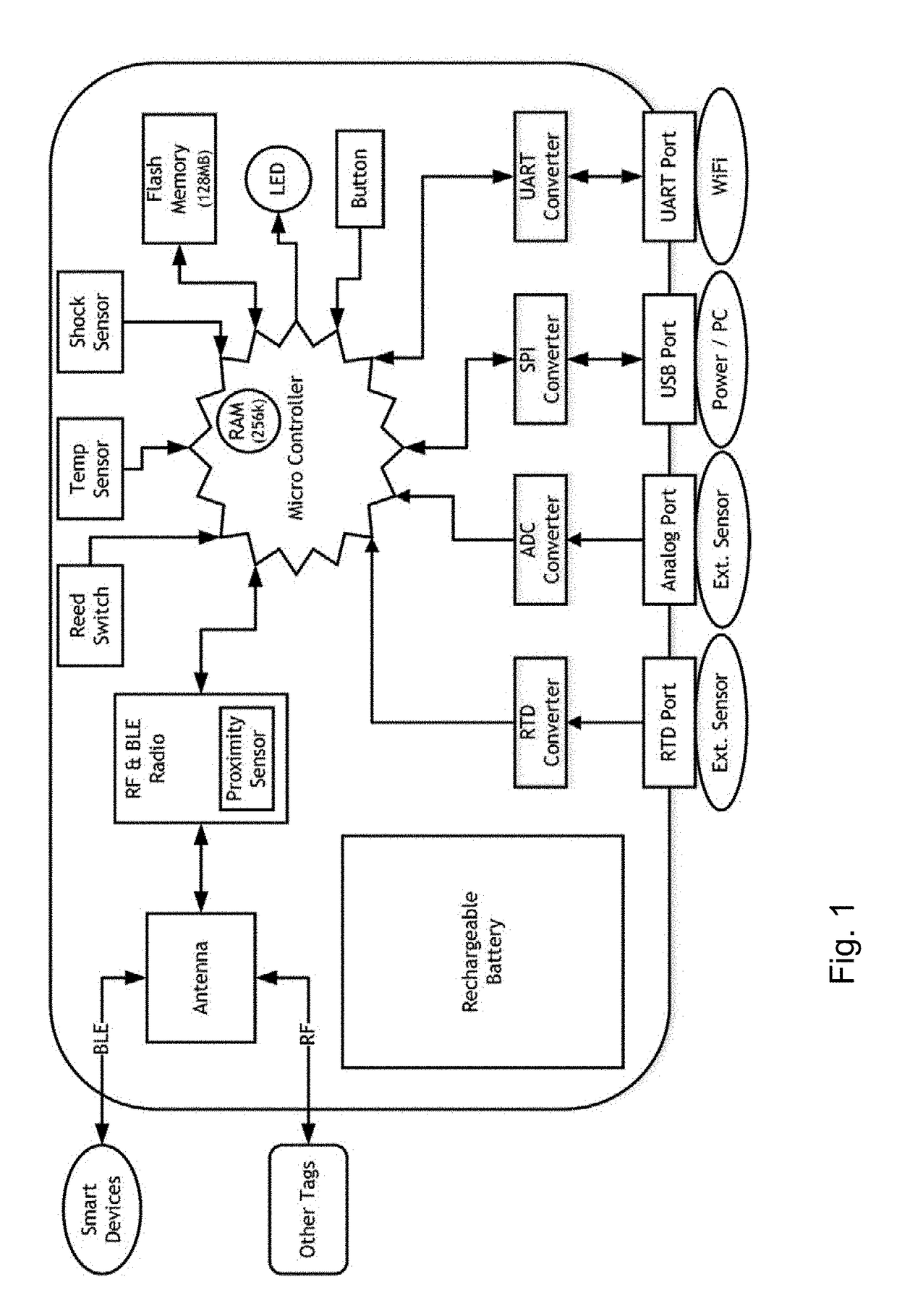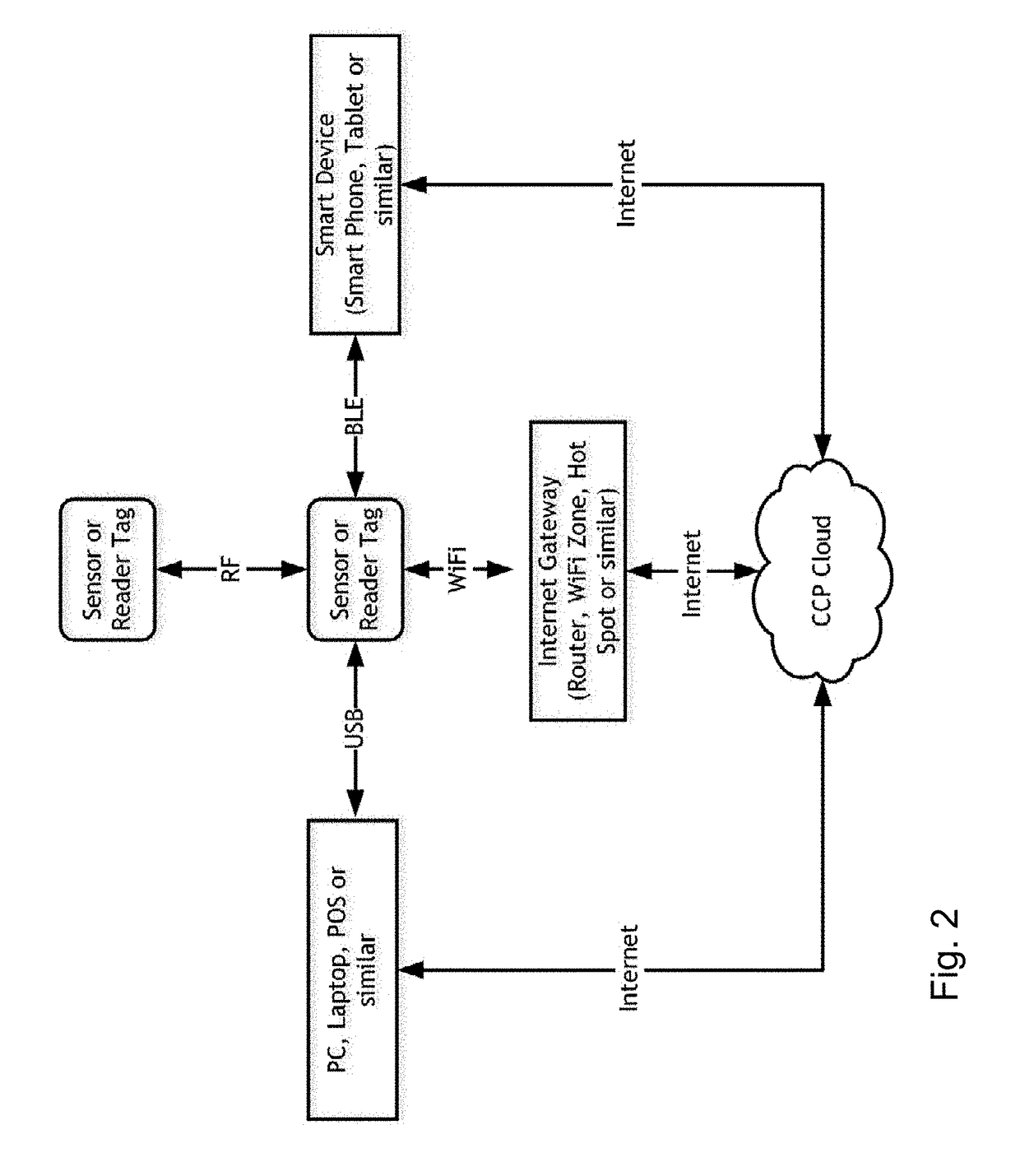Wireless monitoring system
- Summary
- Abstract
- Description
- Claims
- Application Information
AI Technical Summary
Benefits of technology
Problems solved by technology
Method used
Image
Examples
Embodiment Construction
[0040]A preferred embodiment of the invention will now be described with reference to the drawings in which:
[0041]FIG. 1 is a diagram of the primary hardware components of the Smart Tag embodiment of this invention;
[0042]FIG. 2 is a diagram of the four alternative methods of communication deployed by the Smart Tag embodiment of this invention;
[0043]FIG. 3 depicts each of the major states in which a tag may be configured including:
[0044]FIG. 3a depicts tags in the Sensor (RF Star) Mode
[0045]FIG. 3b depicts tags in the Sensor (RF Mesh) Mode
[0046]FIG. 3c depicts tags in the Sensor (Transitional BLE) Mode
[0047]FIG. 3d depicts tags in the Sensor (Static BLE) Mode
[0048]FIG. 3e depicts tags in the Sensor (WiFi) Mode
[0049]FIG. 3f depicts tags in the Reader (WiFi) Mode
[0050]FIG. 3g depicts tags in the Reader (USB) Mode
[0051]FIG. 3h depicts tags in the Reader (BLE) Mode
[0052]FIG. 3i depicts tags in the Shipment Mode
[0053]FIG. 3j depicts tags in the Shipment (RF Mesh) Mode
[0054]FIG. 4 is an ov...
PUM
 Login to View More
Login to View More Abstract
Description
Claims
Application Information
 Login to View More
Login to View More - R&D
- Intellectual Property
- Life Sciences
- Materials
- Tech Scout
- Unparalleled Data Quality
- Higher Quality Content
- 60% Fewer Hallucinations
Browse by: Latest US Patents, China's latest patents, Technical Efficacy Thesaurus, Application Domain, Technology Topic, Popular Technical Reports.
© 2025 PatSnap. All rights reserved.Legal|Privacy policy|Modern Slavery Act Transparency Statement|Sitemap|About US| Contact US: help@patsnap.com



